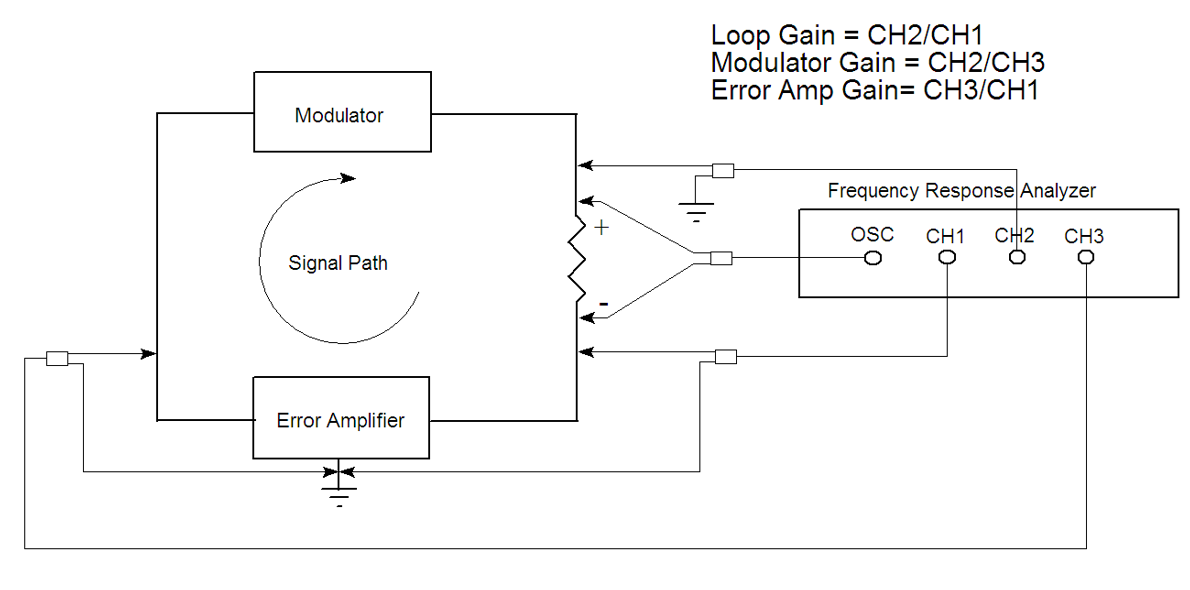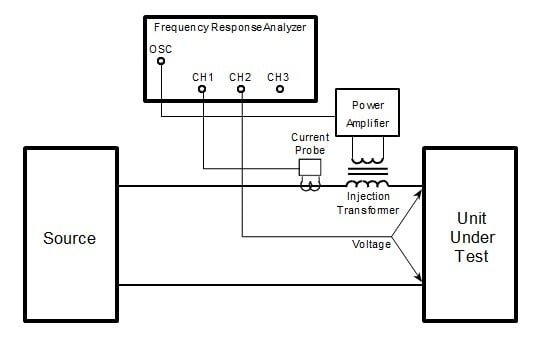Why Does My Bode Plot Look Like That?!?
By Ford Mays - February 16, 2024
Occasionally, when measuring loop gain, you see something that is quite unexpected. You have tried most all the tricks and tips (injection site location, injection levels) to get a good smooth plot, but it the loop gain plot still ‘looks funny’. Maybe it is an unexpected ‘hump’ in the gain or ‘weird’ phase behavior. At this point, you want to understand what is causing this, and the first step is to break the loop into its constituent parts, the modulator (plant) and feedback (compensation). By doing this, we can see what is in our control (the feedback circuit) or what is not (the modulator). This is discussed in detail in the Tuttle’s Topics blog series.
Measuring the modulator transfer function and the feedback transfer function is very much like measuring the loop gain, we just have to move the probes. Here is a connection diagram for measuring the modulator:

Figure 1. Modulator Transfer Function Measurement
The modulator transfer function is the gain (and phase), where A=Vo/Vi (CH2/CH1). To measure the feedback transfer function, move the Channel 2 input to the other side of the injection resistor (V1), and the feedback transfer function is CH1/CH2.
Now you will be able to see which part of the loop is contributing the unexpected gain or phase shift. You might also check and make sure that any over-voltage or over-current protection features are not 'kicking in', as they can cause unexpected results in the plots.
Should you experience unexpected results, splitting the loop gain into its constituent parts, the modulator (plant) and feedback (compensation) can often be very insightful. However, there may be times when you need "another set of eyes" to look at an irregular plot, and we are here to help. Please contact us here or call (512-949-3141) or email (fmays@venableinstruments.com) me for assistance.



